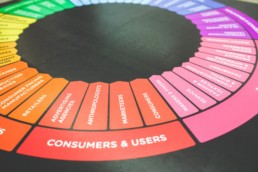
BetterLeasing Launch – Hit the ground running with 3 web and mobile apps.
Over 1000+ apartments and 30000+ resident users
Did you know? Of all the reasons you create a mobile app, the most vital is being relevant to the user. By this, we mean your primary focus is keeping the user engaged with your mobile app to the extent that they keep logging in every day.
Now, it’s a dream for many app owners to see this trend in their analytics. But for some mobile app owners, this is a reality.
Why is that so?
Because they have a clear strategy that takes the user from a mere prospect to a raving fan. By following these five steps, we show you how you can identify the right audience and tap into app data metrics to serve the audience better every time.
Step 1: Know Your Audience
User experience (UX) is amplified when you know the pain point that gets your buyer persona to your app every single time.
Digging deep into user metrics by mining your user data is a good starting point. If you are yet to launch your app, then check out your social media channels for the buyer persona (readers) that like your content.
Some questions that can get you right in your user’s mind are what are the desired app features or how your app can solve their frustrations with similar apps in the market.
If your app is in the market, then a glance at user data can give you key metrics of user engagement, monthly active users, app retention, and app churn. Some platforms that businesses depend on for rich app analytics are Mixpanel, Apptimize, Google Analytics, and Firebase.

Step 2: Devise User Engagement Strategies
Many user engagement strategies can make your mobile app relatable, easy to use, and yet highly practical. Some ways are:
- Simplicity in design
- Mobile app A/B testing to find better user retention strategies
- Reduced onboarding steps
- Better features than other competitive apps
However, we recommend looking at the following engagement steps, especially if user engagement is a key metric you want to achieve this year.
Personalization: Personalization that greets your user every single day can tilt the user to your app like a friend. Besides, it makes your app stand apart from the millions of apps residing in the user’s phone that are yet to be used regularly.
Don’t stop at the welcome page. Personalize the landing page, in-app messages, and referrals.
Increased interaction: Besides push notifications, we suggest familiarizing your app to the user at every point. Display a preview of the app to make it easy for the user to know your app in a few minutes. Enable a progress bar that encourages users to go deep and explore the app further. It creates a continuous loop for better interaction and productivity.
Step 3: Create a Robust Funnel for the User
Like social media, your users can get lost in the mobile app without taking the intended action they signed up for.
If you desire an intentional action of getting them in your sales funnel, then pointing them in that direction makes work easy for them. With the right funnel analytics, you reduce the attrition that happens at the start of the funnel, thereby getting more people in the sales pipeline.

What is a CTA?
Popularly known as the CTA (Call-to-Action), it means guiding your user to take the action you desire. If you want the user to sign-in, take them there.
If you want the user to complete the onboarding and leave a review on the process, lead them to the process.

High recall leads to higher interactions with your customers. Creating a short and easy process the moment the user downloads the app is a sure shot way to create an excellent first impression.
Step 4: Using Metrics to Track Your Users
You can go as per your user likes and log-ins. However, the key to a successful app is tracking your app engagement metrics, following your app retention strategies, and reducing churn rate regularly.
Engaged Users: Users who actively visit, use, and regularly interact with the app features to the optimum are engaged users. They don’t mind promoting your app and are ready to pay for it if it’s necessary.
App Retention: A percentage of users that revisit the mobile app every 30 days is considered as app retention.
App Churn Rate: A certain percentage of users that stop using the app after a certain period lead to attrition, also known as the attrition rate.
While likes and reviews are some of the metrics, they don’t make it ultra-specific and relevant every time.
Consider the case where a user logs into the system every day. However, if the only thing they do is log-in and not actively participate in the app functions, then it’s a vanity metric that’s not enough to measure customer impact on the app.

Step 5: Lean on a Reliable Partner
All said and done; your app is the source of getting leads and customers. Pointing your team to these five steps can reduce the guesswork in creating a promising mobile app. However, if your team is already chasing a bunch of KPIs, it can get challenging to load them with some more.
If you believe in simplifying your app users’ life with as few steps yet with highly valuable stuff in a short time, relying on time-tested strategies will work well. You could even get the results without spending enormous resources and time in a stipulated period.
To know more about how we can collaborate to improve your app user engagement, contact us here.

